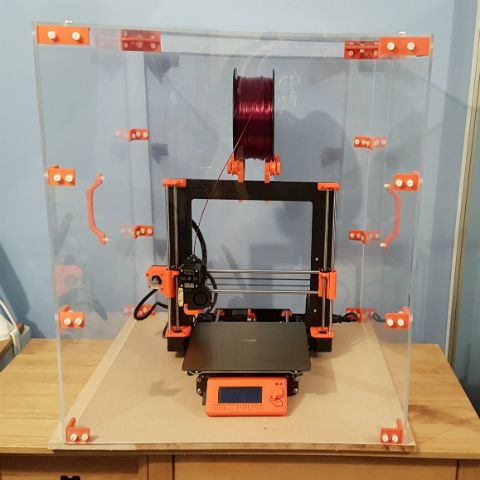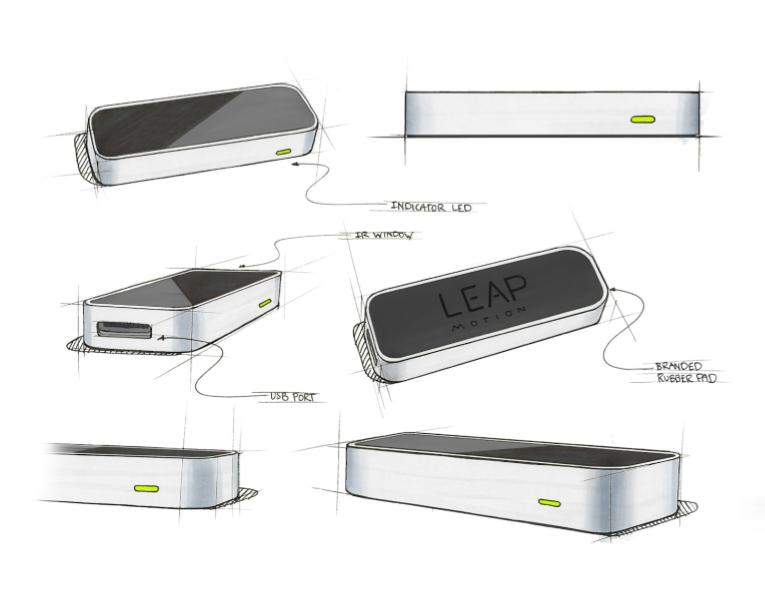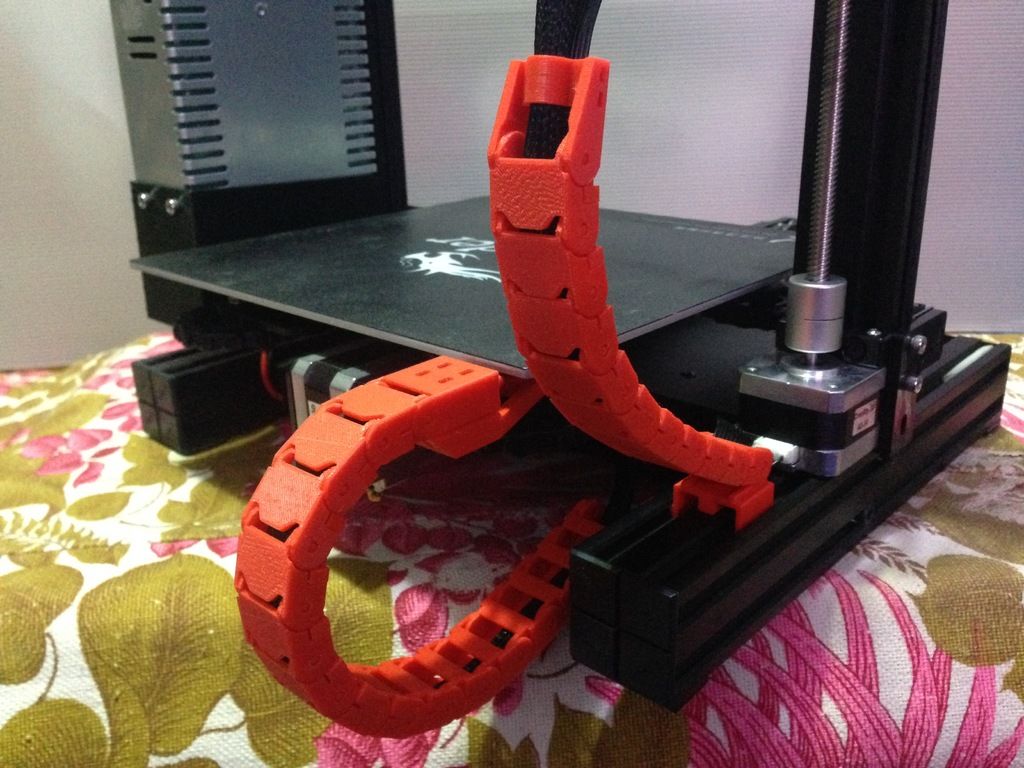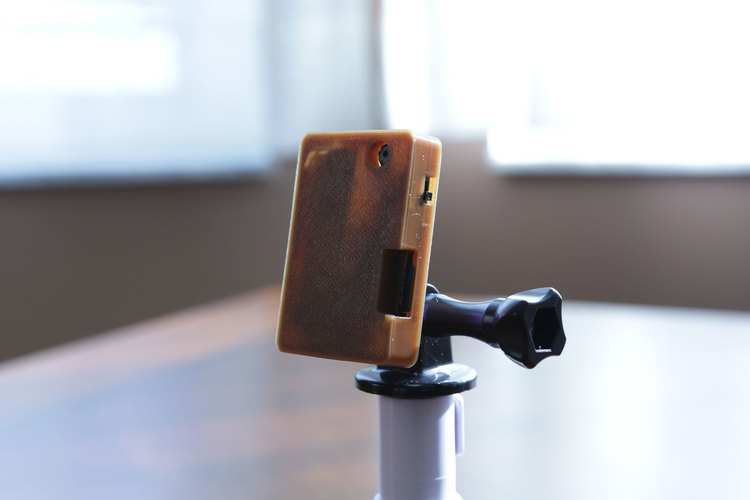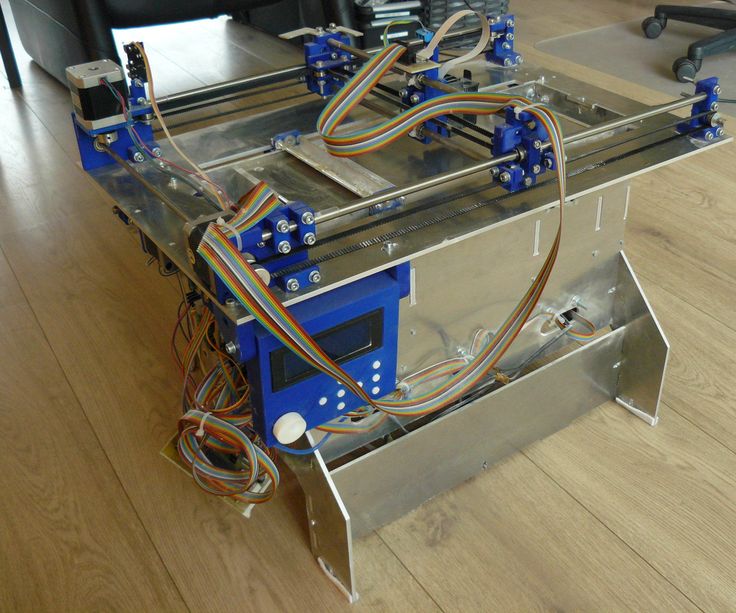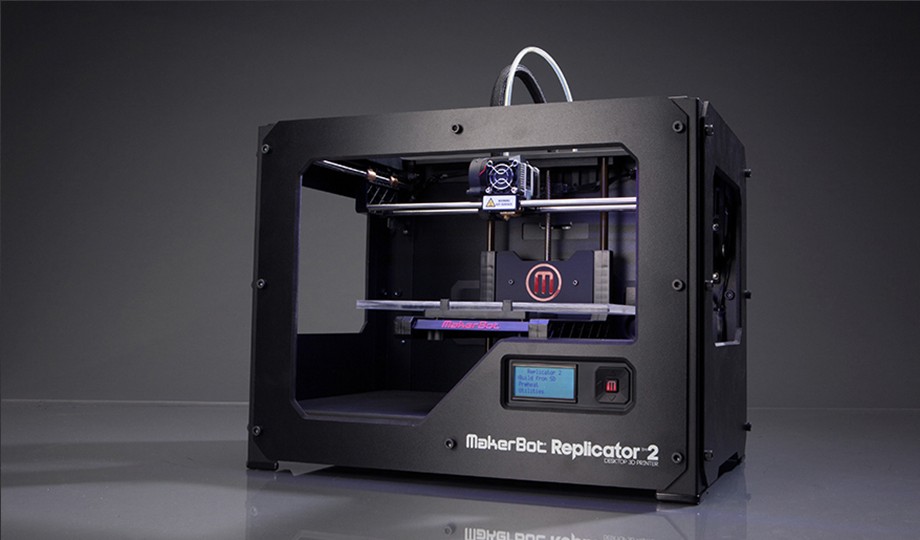Diy 3d printer kit reviews
The 10 Best DIY 3D Printer Kits 2022 (Starting at $150!)
Increasingly, makers are turning away from desktop FDM 3D printers, preferring to buy a cheap 3D printer kit and build their own DIY 3D printer from scratch. Some of these are RepRap 3D printer kits, and some are specially designed kits.
The 3D printer kit revolution has reduced prices, led to a number of key breakthroughs, and has made 3D printing more accessible than ever before.
These 3D printer kits can take just a few minutes to assemble, or take hours or even days. They can also vary greatly in price, print accuracy, maximum build and print speed. Some even use technologies other than fused deposition modeling — you can now buy DIY SLS 3D printers and SLA 3D printers.
| 3D printer kit name and brand | Build Volume (mm) | Price | Where to purchase for best price | Alternative Purchase Option |
|---|---|---|---|---|
| Creality Ender 3 | 220 x 220 x 250 | $189 | Creality Store here | Amazon here |
| Prusa Mini | 180 x 180 x 180 | $399 | Prusa Store here | |
| Creality Ender 3 V2 | 220 x 220 x 250 | $279 | Creality Store here | Amazon here |
| Creality Ender 5 | 220 x 220 x 300 | $349 | Amazon here | 3DJake UK & Europe |
| Flsun QQ-S | 255 x 255 x 360 | $369 | Amazon here | |
| Tronxy X5SA Pro | 330 x 330 x 400 | $399 | Amazon here | |
| Anycubic Vyper | 245 x 245 x 260 | $429 | Anycubic Store here | Amazon here |
| Creality CR-10 / V3 | 300 x 300 x 400 | $369 / $459 | Creality Store here | Amazon here |
| Prusa i3 MK3S | 250 x 210 x 210 | $749 / $999 | Kit available on Prusa store here | Fully assembled on Prusa store here |
| Peopoly Moai | 130 x 130 x 180 | $1,295 | Matterhackers here |
Advantages of DIY 3D printers
- Open source: Most homemade 3D printers are also open source 3D printers, meaning they can be tinkered with, upgraded, and modded freely with the creators’ permission.
Many Creality, Prusa and Anet printers are open source, as well as desktop 3D printers like BCN3D and Ultimaker printers.
- Open build areas: 3D printer kits rarely feature closed chambers or enclosures as standard. This would affect the printing of filaments like Nylon or PEEK, but is less of an issue for standard filaments like PLA or PETG.
- Easily upgradable parts: DIY 3D printer owners are frequently switching out parts, such as nozzles, hot ends and extruders for better quality parts.
- Lower price: For the quality and size, you get a better deal if you build your own 3D printer.
- Larger build volume: The open build area means that you can have a larger 3D printer build area for the same size, neglecting the need for an enclosing frame. Therefore, low cost kits like the Creality CR-10 can have huge build volumes.
Build your own 3D printer: what makes a good DIY 3D printer?
We used several criteria to determine which 3D printer kit made it into our ranking:
- Cheap DIY 3D printer kits: We only included FDM 3D printer kits under $1,500.
 The printers are listed in price order, cheapest first.
The printers are listed in price order, cheapest first. - Print quality
- It it easy to build your own 3D printer: Not everyone is a technology wizard. Therefore, any kit that can be assembled quickly, easily, and is simple to operate, is at an advantage.
The best 3D printer kits
3DSourced is reader-supported. When you buy through links on our site, we may earn an affiliate commission. Learn more
1. Creality Ender 3
- Price: $189 — Available on Creality Store here / Available on Amazon here
- Build volume: 220 x 220 x 250 mm
The original Ender 3 is still one of the most popular 3D printer kits in the world, more than three years after it was originally released. The low price, great build area, and reliability have cemented the Ender 3 as one of the best 3D printer kits around.
The reliability is a major selling point in such a cheap 3D printer kit. Whereas most DIY printers in this price range are plagued by issues caused by low-quality parts, the Ender 3 is dependable and consistent, partly due to its upgraded extruder to prevent clogging or poor extrusion.-kupit-v-soin-store.ru-4.png)
The resume printing function is useful if you’re prone to power cuts or want to print for several days straight and don’t want to risk a huge ruined print, and the Ender 3 is fairly quick to assemble, and shouldn’t take more than an hour or so.
However, it doesn’t feature auto-leveling — you’ll need to install a BLTouch or similar kit for that.
2. Prusa Mini — Great Prusa 3D printer kit
- Price: $399 — Available on Prusa Store here
- Print volume: 180 x 180 x 180 mm
- Print speed: up to 200mm/s
The Mini 3D printer version of the wildly successful Prusa MK3S, the Mini retains the 0.05mm layer precision and can still calibrate itself, but costs less than half of the i3 MK3S. With the Mini, you can build your own 3D printer — and one with Prusa-level reliability! — for just $349.
It’s more compact, with a smaller build volume, and features removable spring steel sheets that make removing finished prints extremely easy — just flex the build plate and prints will come off with ease.
The extruder cannot reach the same temperatures during printing as the MK3S, though you can still print a number of tougher filaments like ABS, PETG, ASA and flexible filaments. The Mini retains the fast 200mm/s max printing speed, and can be upgraded to feature a filament sensor.
Overall, it’s another reliable 3D printer by the trusted Prusa brand who have proven over the years that their printers are some of the best 3D printer kits around. If you have the money, go for the MK3S, but for those on a budget, the Mini does a great job.
3. Creality Ender 3 V2 — Best DIY 3D Printer Under $300
- Price: $279 — Available on Creality Store here / Available on Amazon here
- Build volume: 220 x 220 x 250 mm
Building on the success of the Ender 3 and improving and fixing its few flaws, the Ender 3 V2, while the same size build volume, is a much enhanced DIY 3D printer.
The upgraded motherboard makes the printer quieter than ever, and the extra power makes for a much more stable and precise printing experience.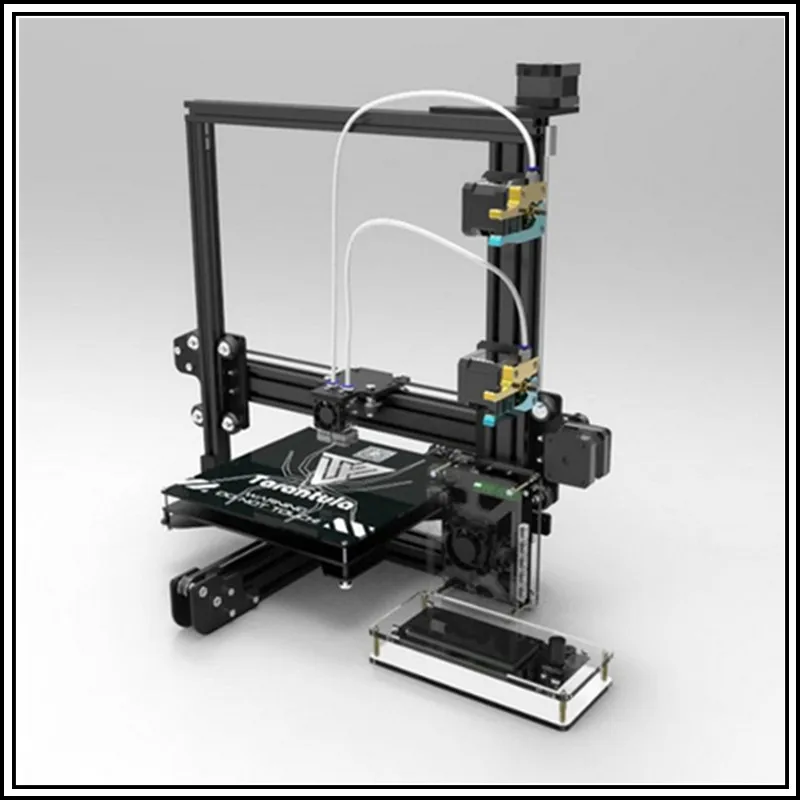
Read more: the quiet 3D printer buyer’s guide
The upgraded extruder is also a great touch. It’s easier to load and feed filament into via the rotary knob, ideal for PLA and flexible filaments. The large 4.3-inch screen makes the interface more intuitive, and the Ender 3 V2 is really easy to use overall.
Another extra is the carborundum glass platform, which can heat up faster than ever and improves adhesion so you can be sure of a great first layer. Overall, if you have the extra $100 to spare, consider going for the Ender 3 V2 over the original.
4. Creality Ender 5 — The Best DIY 3D printer under $500
- Price: $349 — Available on Amazon here / 3DJake UK & Europe here
- Print volume: 220 x 220 x 300 mm
Another Creality kit, the Ender 5 is another great 3D printer you can build at home. The Ender 5 is $100 more expensive, but boasts a number of improvements that make the extra money seem worth it.
Firstly, it can print taller prints than the Ender 3 — 300 mm high rather than 250 — important if you print tall structures like tall vases or monument 3D models.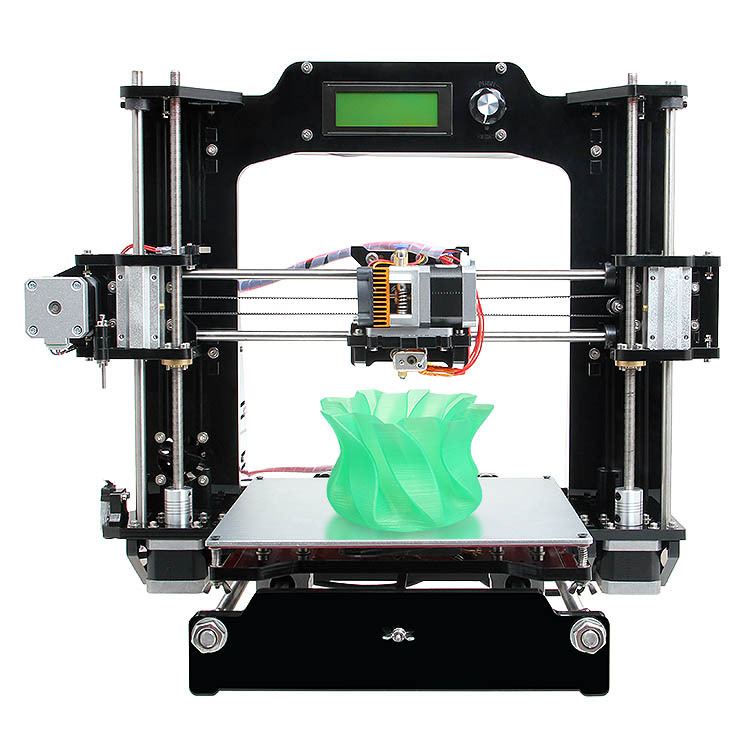 The structure is also stronger, having adopted a cube shape like the Tronxy X5SA which helps with stability, reducing vibrations or movements from external events, and improving part surface finish and quality.
The structure is also stronger, having adopted a cube shape like the Tronxy X5SA which helps with stability, reducing vibrations or movements from external events, and improving part surface finish and quality.
Moreover, the minimum layer height of 50 microns is extraordinary for such a cheap machine. Review after review repeats how crisp the surface finish of their prints look with the Ender 5, so it’s fair to say the Ender 5 is a smash hit.
- For an extra $50 you can upgrade to the Ender 5 Pro printer kit, at $399. It’s available to buy here.
Note: while the Ender 5 can be tweaked to increase print speed without a noticeable loss in print quality, we recommend you don’t get too extravagant with this. Stick with 60 mm/s or below for models with intricate parts — it’s worth a bit of extra printing time to guarantee crisp prints.
5. FLSUN QQ-S — Great Delta DIY 3D printer
- Price: $369 — Available on Amazon worldwide here
- Print volume: 255 x 255 x 360 mm
- Print speed: up to 300mm/s
One of the best DIY delta 3D printer machines out there, the Flsun QQ-S features notable improvements on the original Flsun QQ. It comes 90% assembled, so though technically still a 3D printer kit it will take under an hour to get up and running.
It comes 90% assembled, so though technically still a 3D printer kit it will take under an hour to get up and running.
- We were lucky enough to test the FLSUN QQ-S, make sure to also check out our FLSUN QQ-S review.
Not only does it have a fantastic build volume for the price — especially the ability to print tall parts! — but it also comes with an upgraded lattice glass print bed, allowing for faster heating up to 100C in under 5 minutes, less warping and better adhesion during 3D printing. This is perfect for materials such as ABS filament, which are known to warp significantly under the wrong conditions.
Another advantage that beginners will enjoy is that as delta 3D printers don’t move the print bed — the print head does all the moving — the printer only needs to be auto-leveled once. It comes with a titan extruder, and can print with common printing materials like PLA and ABS, PVA, and HIPS for supports, as well as wood-filled filaments and flexible filaments.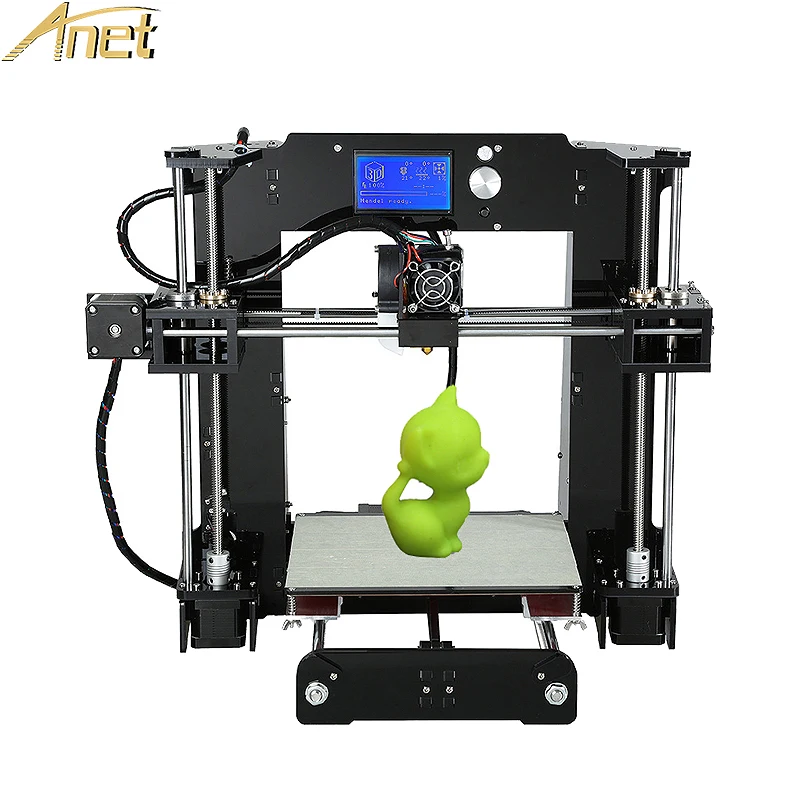
It’s accurate, too, able to print at up to 50 microns. Overall, it’s a fantastic delta 3D printer kit that prints accurately, and super fast — it even made it into our fastest 3D printer ranking. It’s also one of the easiest DIY 3D printers to build, coming almost fully assembled — you just need to attach the gears and rods to hold the structure up, and then attach the extruder and filament holder.
6. Tronxy X5SA Pro — Huge Self-Assemble 3D printer
- Company based: China
- Price: $399 — Available on Amazon here
- Build volume: 330 x 330 x 400 mm
Kit 3D printer kings Tronxy showed humility and dedication to improve the X5SA Pro, fixing a number of small issues that affected the original. The X5SA Pro addresses the X-axis issues and has made it more stable, and upgraded the materials forming the printer kit’s structure. Now on the X5SA Pro, most of the printer is made from aluminum and is heavier and more stable, reducing vibrations and generally improving print performance.
As for the X5SA’s specs, it’s a large 3D printer DIY kit with similar printing sizes to the Creality CR-10, and boasts a 330 x 330 x 400 build volume. It claims increased precision vs the original Tronxy X5SA, and has a maximum accuracy of 125 microns. It’s impressive, reliable and one of the best cheap 3D printers you can get with such a large size — so those with big 3D printing ideas will enjoy both this and the Creality CR-10.
It’ll probably take you around four hours to build this printer kit, but it’ll be worth it once you start printing!The Tronxy X5SA Pro’s cube shape offers stability benefits resulting in good surface finish.
7. Anycubic Vyper
- Price: $429 — Available on Anycubic store here / Available on Amazon here
- Build volume: 245 x 245 x 245 mm
A key feature on the Anycubic Vyper missing from many printers in this price range is that the Vyper self-levels. This is a huge relief for busy makers who would rather not re-level their printer every few prints, and who just want to get to the fun part — printing! The 16-point bed leveling process accounts for differences between the nozzle and bed and can be done in just one click.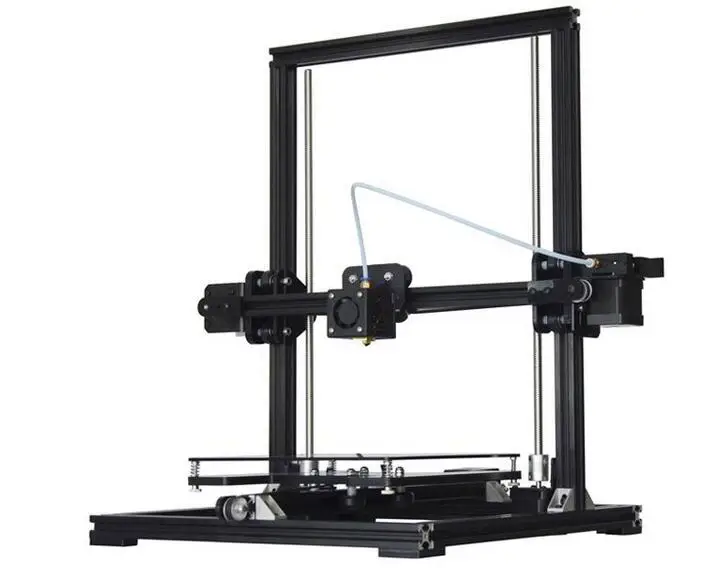
The 32-bit motherboard is beefed up compared to previous Anycubic 3D printer kits, offering silent printing and improved stability. We tested the Anycubic Vyper and found it to be consistent in printing, easy to operate with the 4.3-inch touchscreen, and it was incredibly easy to assemble — we built it in 10-15 minutes.
The new PEI spring steel magnetic print bed can be lifted off the platform easily for easy removal of your finished parts, and is designed to be scratch and heat resistant and to work well with standard filaments such as PLA, ABS, PETG, and TPU.
The Vyper also features an innovative new two-fan dual cooling system, cooling down parts quicker and enabling faster printing without causing errors — the Vyper can comfortably print at 100mm/s.
8. Creality CR-10 / V3
- Price: $369 / $459 — Available on Amazon here / Available on Creality Store here
- Print volume: 300 x 300 x 400 mm
The Creality CR-10 has a passionate group of supporters who hail it as the best DIY 3D printer kit in its price range.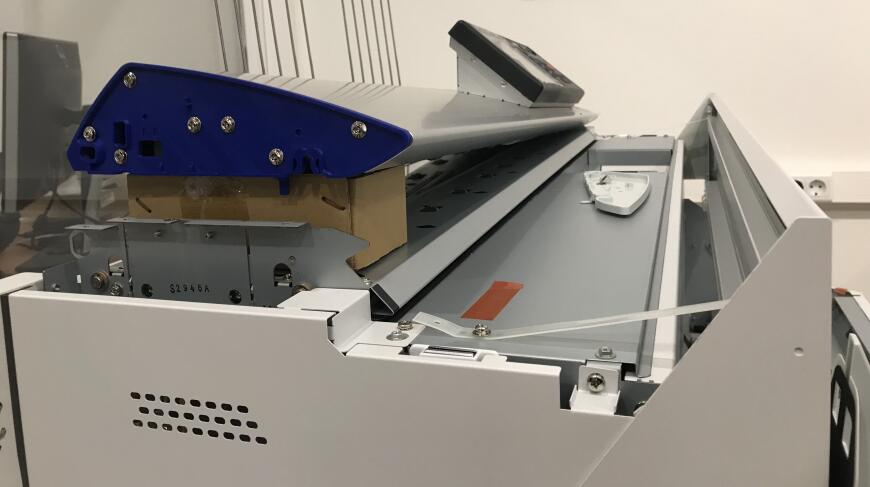 Manufactured by Creality, the CR-10 is a fantastic 3D printer build kit that can be built within 45 minutes.
Manufactured by Creality, the CR-10 is a fantastic 3D printer build kit that can be built within 45 minutes.
- For a larger version, the Creality CR10 MAX has 450 x 450 x 470 mm maximum build volume, and costs $999. You can buy it here / or on 3DJake UK & Europe here
- For a smaller version, the CR10 Mini is available — you can buy it here / or on 3DJake UK & Europe here
The Creality CR-10 has an accuracy and print volume which is competitive with printers 5 times more expensive. With it’s minimum layer thickness of 0.05mm and fantastic 300 x 300 x 400 mm build volume, the Creality CR-10 is a great printer for just $370. It’s easy to use, making it the perfect 3D printer for beginners.
9. Prusa i3 MK3S — best 3D printer kit
- Company based: Czechia
- Price: $749 as a kit — Available on the Prusa store here / $999 fully assembled — Available on the Prusa store here
- Build volume: 250 x 210 x 210 mm
The Prusa i3 is known as the undeniable king of DIY 3D printer kits.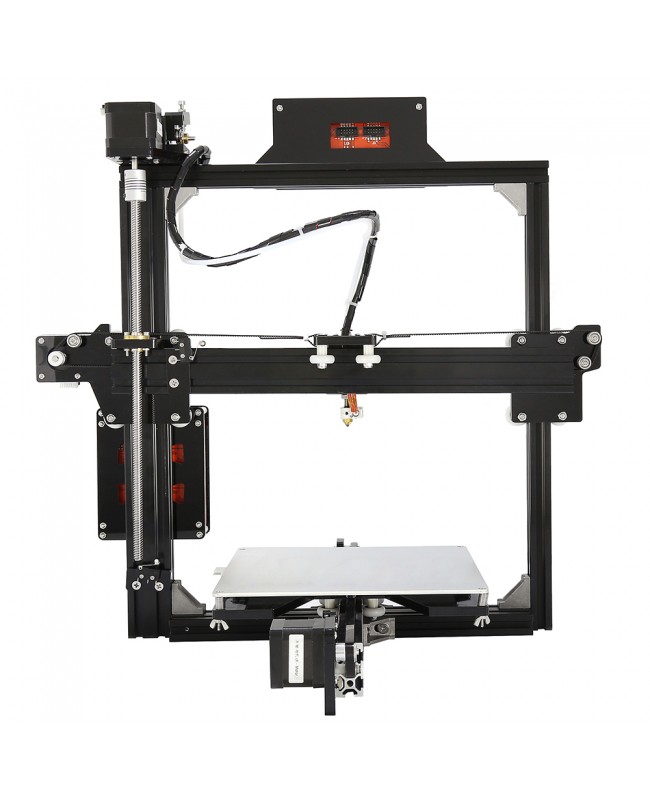 These RepRap kits are fantastic, sporting an impressive print volume of 250 x 210 x 210 mm, and being able to print at speeds up to 200mm/s! It’s also accurate, durable and a complete workhorse, with layer heights from 0.05 mm and a bendable print surface to make removing finished prints as easy as possible.
These RepRap kits are fantastic, sporting an impressive print volume of 250 x 210 x 210 mm, and being able to print at speeds up to 200mm/s! It’s also accurate, durable and a complete workhorse, with layer heights from 0.05 mm and a bendable print surface to make removing finished prints as easy as possible.
Accessible via USB stick or by SD card, the Prusa i3 MK3 kits are designed to be simple to use as well as effective. With layer resolutions up to 50 microns, the Prusa i3 homemade 3D printer is so effective that it outperforms far more expensive 3D printers. It can print tougher filaments than more expensive printers too, with a Bondtech extruder that can reach temperatures of up to 300C, making printing Polycarbonate, ABS, Nylon, and other difficult filaments no problem.Colorful prints are possible with the Multi Material Upgrade Kit, which we discuss below.
Additionally, you can print up to 5 colors simultaneously with your Prusa if you purchase their multi-material upgrade kit, costing $300.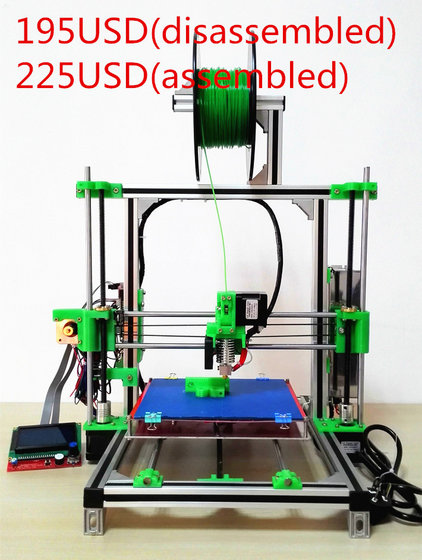 This makes colorful model printing a breeze, and opens up for far more extravagant printing projects.
This makes colorful model printing a breeze, and opens up for far more extravagant printing projects.
- With a Multi Material Upgrade kit, it can also print multiple colors. We explain more in our color 3D printer buyer’s guide.
- You can buy the Multi Material Upgrade Kit 2.0 here.
You can choose to either assemble the kit yourself or buy the printer pre-assembled, though this costs a few hundred dollars more. Overall, the Prusa remains the undisputed king of DIY 3D printer kits, with its competitors needing to do a lot of catching up to dethrone it.
The Prusa, with Multi Material Upgrade kit, allowing it to print multiple colors simultaneously. We explain this in our color 3D printer guide.10. Peopoly Moai SLA Kit — Homemade resin 3D printer kit
- Price: $1,295 — Available on Matterhackers here
- Build volume: 130 x 130 x 180 mm
The only resin 3D printer featured in our 3D printer kit guide, the Peopoly Moai is an incredible feat of engineering. It’s huge, offers incredible accuracy and precision, and best of all, you can build your own 3D printer at home from scratch.
It’s huge, offers incredible accuracy and precision, and best of all, you can build your own 3D printer at home from scratch.
For those looking for an effective SLA 3D printer, and who do not want to pay full price, the Moai kit could be the perfect printer for you. It is so accurate that it can mechanically print up to an astonishing 5-micron layer height, according to Peopoly, though you’ll likely never reach this accuracy because you won’t need to, nor would most resins or models accommodate this.
Featuring a 70-micron laser spot size, once you’ve built this homemade 3D printer you’ll be ready to create resin molds for 3D printed jewelry, dental models, engineering pieces, as well as prototypes for rapid prototyping or fun characters if you use the Moai as a 3D printer for miniatures.
The Peopoly Moai is open to use third-party resins, for those who want to save money on lower-cost resins and are fine with the slight quality drop-off. The printer itself however does not come with any resin, so you’ll need to purchase that with the kit. It is only to be expected that the Moai will take some time to assemble, as resin 3D printers are more complex than their FDM 3D printer counterparts, but most makers will be able to build their own 3D printer within 4 hours.
It is only to be expected that the Moai will take some time to assemble, as resin 3D printers are more complex than their FDM 3D printer counterparts, but most makers will be able to build their own 3D printer within 4 hours.
How to Build Your Own (Sept. 2022)
DIY 3D printer kits are cheap, but they deliver good quality prints. However, the assembly takes time and patience. It may also require a certain level of skills. This page will help you build your own 3D machine by giving you a list of great but cheap kits.
Do you know that you can build your own 3D printer? Do you want to learn how?
If you say “yes” to any of the questions above, you will probably find this page helpful. In this article, I will discuss the best 3D printer kits and which among them are available at the best price. I know that you are already very excited to learn about the best DIY 3D printer kits and I’ll share with your all the details about them including their build volume, print quality, printing speed and more.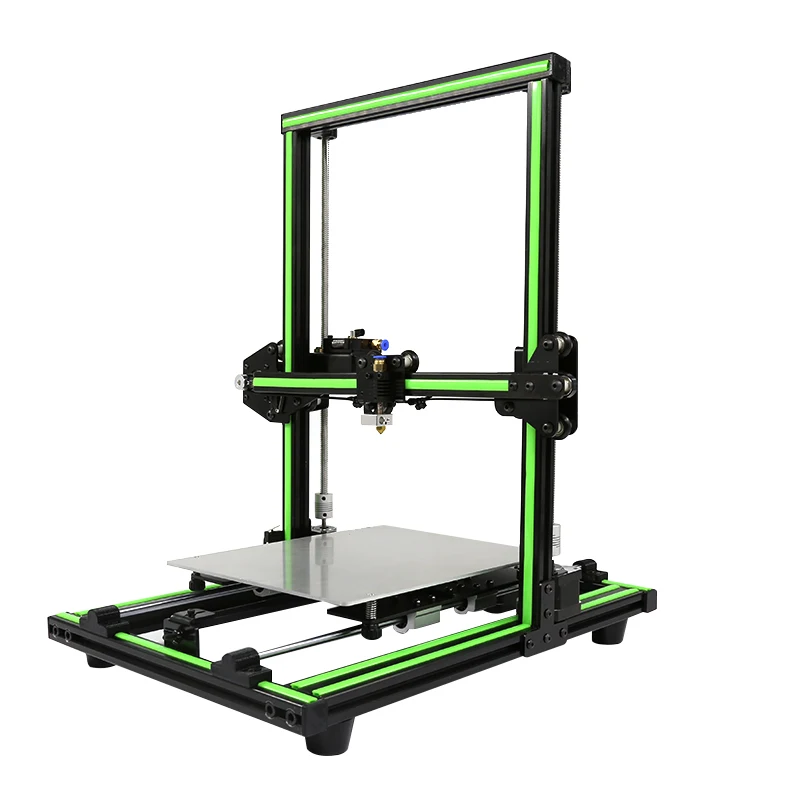 So, let’s get started.
So, let’s get started.
Contents
- 1 How to Build Your Own 3D Printer?
- 1.1 Fully custom printer
- 1.2 Printer in a box
- 2 DIY 3D Printer Plans
- 3 11 Best DIY 3D Printer Kits
- 3.1 1. Flashforge Creator Pro
- 3.2 2. Flashforge Dreamer
- 3.3 3. Anycubic 4MAX
- 3.4 4. Anycubic Kossel Delta DIY Kit
- 3.5 5. Creality Ender 3 DIY 3D Printer
- 3.6 6. GEEETECH A10 3D Printer
- 3.7 7. Geeetech 3D Printer Prusa I3 Pro W
- 3.8 8. RepRap Guru Prusa i3 3D Printer Kit
- 3.9 9. Tronxy X5SA Desktop DIY 3D Printer Kit
- 3.10 10. iMakr Startt 3D Printer Kit
- 3.11 11. Tevo Tarantula 3D Printer Kit
- 4 How much does a DIY 3D printer cost?
- 5 Can you DIY a 3D printer?
- 6 Is it expensive to 3D print?
- 7 Conclusion
How to Build Your Own 3D Printer?
How to make a 3D printer? I understand that many are interested in this and in this section, you will find the answer.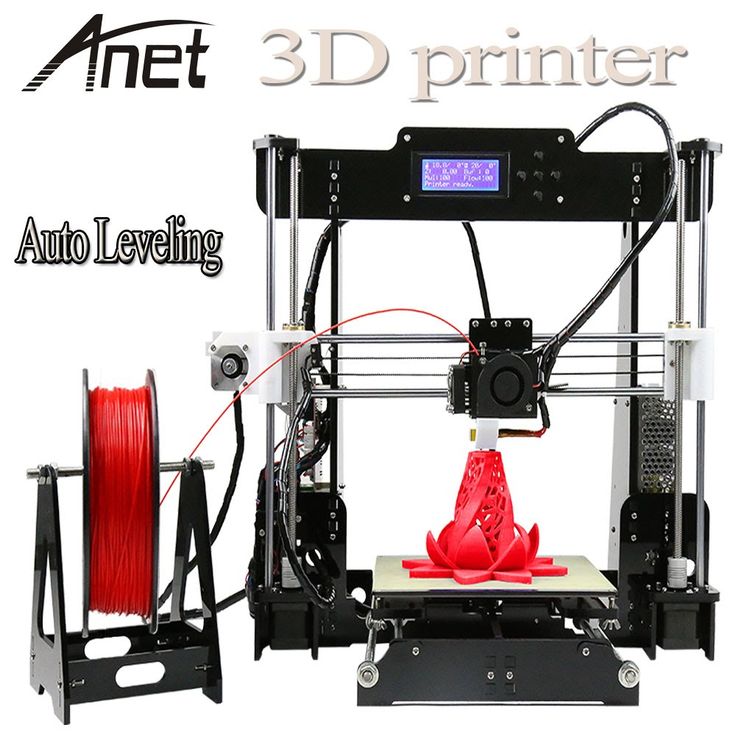 There are two ways for you to make your own 3D machine and you are about to know it.
There are two ways for you to make your own 3D machine and you are about to know it.
Note: This article is about the best 3D printer kits, so please don’t expect to find a fully assembled machine. But don’t worry because if you are interested, you will discover that building 3D printers is fun and exciting. Continue reading to know more about them. I’ll also give you a list of the best DIY 3D printer kits in the market.
Fully custom printer
This is not easy to do, but it gives you the opportunity to learn more about 3D printing. It helps you become more familiar with every small detail that comes along with creating a printer. When there’s a need to repair later, the task will be easier for you.
The only disadvantage is that this approach needs technical knowledge that amateurs and hobbyists lack. In addition, it takes time to collect all the DIY 3D printer parts and put them in place by hand.
Printer in a box
If you want a more convenient approach to create your 3D machine, then, this option is for you.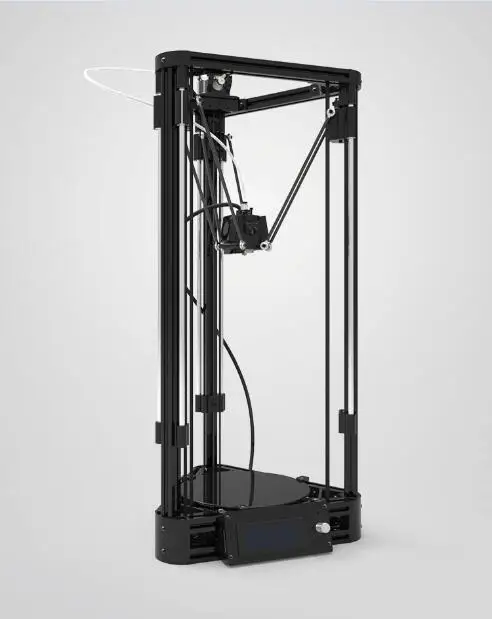 The kits are sold by top 3D manufacturing companies and are accompanied by a step-by-step instruction manual explaining how to build your own 3D printer kit.
The kits are sold by top 3D manufacturing companies and are accompanied by a step-by-step instruction manual explaining how to build your own 3D printer kit.
The kit is not fully assembled but it contains all the parts you need and any misplaced pieces of machinery can usually be re-ordered from the manufacturer. However, if you get this one, you will not learn as much as when you are assembling the printer by pieces.
📌RepRap is popular in the 3D community and among 3D enthusiasts, so you can turn to them for tips on how to build it. You can also ask them where buy parts and how to build your own printer.
RepRap can be purchased on Amazon for a few hundred dollars. There are a lot of 3D printer kits to choose from and many of them deliver great print quality.
DIY 3D Printer Plans
Are you ready to build your own 3D printer? If you are, then check out our list below so you can get started.
1. Get started
First, you have to decide what type of 3D printer you want to build. So, here are some questions that you need to answer to determine the printer’s specifications.
So, here are some questions that you need to answer to determine the printer’s specifications.
- How do you want your printer to look like?
- What capabilities do you require from your printer?
- What size parts should it be able to manufacture?
- Should it allow you to use multiple plastic filaments?
Tip: The more features you want, the more difficult it would be to create your 3D machine. It’s best if you start by building the most basic printer and just add more features according to your needs over time.
2. Collecting the DIY 3D Printer Parts
If you are using a 3D printer builder kit, all the parts needed to build the machine will be included in the kit. However, if you start from scratch, you have to be creative to get the parts you need. So, here’s what you should do.
2.a List the parts
Based on your answers above, research the parts that you need for your DIY printer.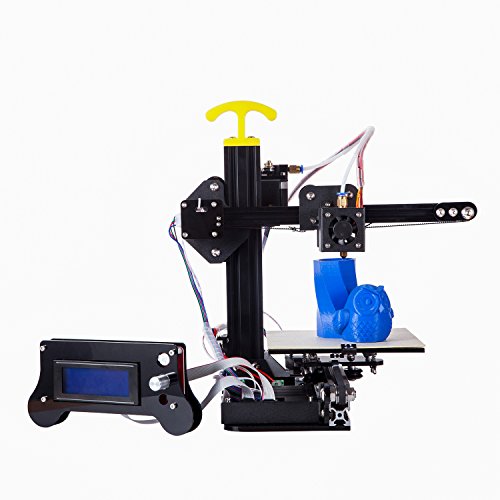 There are several sites that share detailed instructions including the constituent parts for various 3D printer models.
There are several sites that share detailed instructions including the constituent parts for various 3D printer models.
2.b Buy the parts
At this point, you have several options to access the parts that you need. You can visit sites that sell second-hand parts to buy those items at a much cheaper price.
Buying second-hand parts can help you save a lot while getting the same performance you expect from your printer. However, there are parts that you need to buy brand new to ensure a smoothly functioning machine.
You can purchase used parts here:
- Junkyard
If you want to save more, you can also cannibalize other electronics. For instance, stepper motors can be obtained from old DVD drives while the power supply from a computer can work for 3D printers too.
If you are looking for brand new parts, you can purchase them on the following sites:
- Reprap discount
- Ultimaker
- Ebay
- RobotShop
- Bang good
- AliExpress
2. c Prepare the Software
c Prepare the Software
Once your hardware is ready, you have to hook up the printer to your computer with 3D software. The 3D rendering software is necessary to send commands to the printer on the exact shape and dimensions of the piece that needs to be printed and to convert your 2D drawings into 3D models.
3. Building the printer
Once you have collected the parts that you need, it’s time to start building. However, this is not a quick process. This will likely take weeks or even months.
📌I suggest that you take your time and don’t try to finish everything at once. If you rush, chances are high that you will make mistakes while assembling the best DIY 3D printer kits for you. Once this happens, you will waste your resources and energy while ending up with a faulty machine.
If ever you encounter problems while assembling the printer, don’t be afraid to ask for help because the 3D printing community is big and the members are helpful. You can seek advice on forums, where you will likely meet more experienced builders.
You can seek advice on forums, where you will likely meet more experienced builders.
4. Build With Your Printer
Once your printer is ready, add the filament to the extruder. Then, you can now test the print bed, its print quality, printing speed and printing volume. For beginners, you need to get your 3D model ready. If you don’t have one, no problem, there are a number of sites that offer pre-designed shapes and object files that you can use for your first 3D project.
You can download the files and run them through your 3D rendering software to create 3D printed parts. Just make sure that the printer you just built is capable of printing out the dimensions specified in the downloaded files.
Now, it’s time to take a look at the best DIY 3D printer kits available on the market and start to build your own 3D printer kit!
11 Best DIY 3D Printer Kits
If you want to build your own RepRap 3D printer, then this section is for you.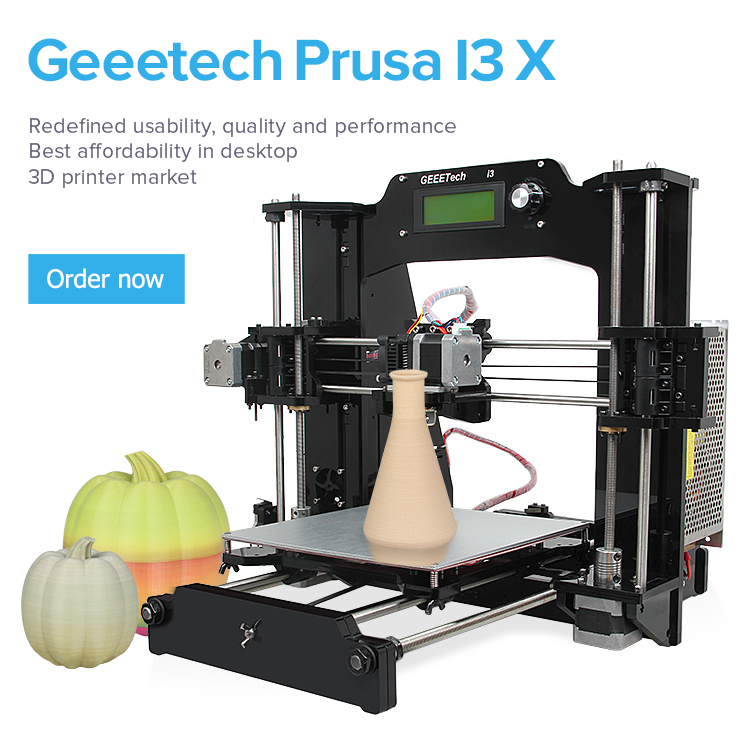 We pick the top DIY kits that are high-quality suit your experience level and of course, budget. You can follow these simple DIY 3D printer plans to have your 3D machine up and running.
We pick the top DIY kits that are high-quality suit your experience level and of course, budget. You can follow these simple DIY 3D printer plans to have your 3D machine up and running.
1. Flashforge Creator Pro
Click Here to Check Price for Flashforge Creator Pro
For beginners who want a DIY kit that is easy to set up with a medium build size and build volume, Flashforge Creator Pro is highly recommended. This is pre-assembled and it only requires minimal effort to make it work.
For instance, you need to attach the printer heads, filaments tubed, and spool holders. Don’t worry, these things are fairly simple to assemble.
Although this is easy to set up and use, the challenging part is that it requires manual bed leveling since it lacks automatic bed leveling. The bed level must be precise to achieve quality prints.
This isn’t a huge problem, but it means a few minutes of extra prep work whenever you want to print. Beginners might find this process a little daunting but once you get the hang of it, it’s not a big deal.
Flashfroge Creator Pro has a metal frame and an enclosed chassis. It doesn’t support WiFi connectivity but it allows you to print from USB or SD card. Thus, you still have the most common option to choose from.
Also, most of the important parts like the extruders can be removed and swapped which is very helpful in case you want to replace it. As for the maintenance, it won’t cost you so much as long as you take care of the components.
Software and electronics
This printer comes with a default Flashforge program. But you can also use Simplify3D because this produces greater print quality.
Build Guides
The machine is accompanied by detailed instructions on how to build it. You can find detailed documentation and troubleshooting guides and tips on their websites. There are also tutorials and videos online that will surely help you if you encounter any issues while building or using this DIY printer.
They also have customer support who are willing to help and assist you all the way. Furthermore, the company offers a 30-day money-back guarantee and a one-year warranty. These are only some of the reasons that make it the best DIY 3D printer kit on our list.
Furthermore, the company offers a 30-day money-back guarantee and a one-year warranty. These are only some of the reasons that make it the best DIY 3D printer kit on our list.
This is one of the best DIY 3D printer kits in terms of price, performance, support, printer build volume and quality of output. So, I highly recommend it.
Check Price Here
Go to top
2. Flashforge Dreamer
Click Here to Check Price for Flashforge Dreamer
Flashforge Dreamer is another simple and easy kit for beginners because just like Flashforge Creator Pro this printer comes pre-assembled. In fact, this is almost ready-to-print (ARP). All you need to do is mouth the extruder set and install the filament.
If you just follow the instructions well, you will complete the setup in just 5 to 10 minutes and Dreamer can give you first 3D print. Setting up 3D printers like this model is much easier compared to other units in its price range.
To make this machine works, just attach the included extruder which is done with two small screws and it only takes a minute to do. Once the extruder is attached, load the filament that comes with the unit.
Once the extruder is attached, load the filament that comes with the unit.
From there, you can start your first 3D print. Aside from the fast setup, it delivers impressive print quality. You will love this more because it operates quietly. Don’t expect it to be completely silent but it’s neither noisy.
The only downside with this is its’ small build area size. You can’t print a big object once due to its small build volume, so you have to print it in smaller parts and assemble it together.
Software and electronics
This kit uses intuitive and easy system management software that is beginner-friendly. It offers a range of customization options from adjusting the build plate temperature settings, extruder temperature settings and more ways to work with your design.
For software, you can use either Flashprint or Simplify3D. The latter is more preferred as it delivers better quality prints. Also, the printer allows you to print through USB and SD cards. For WiFi capabilities, you can use FlashPrint software and route the Simplify3D made G-Code through FlashForge’s program.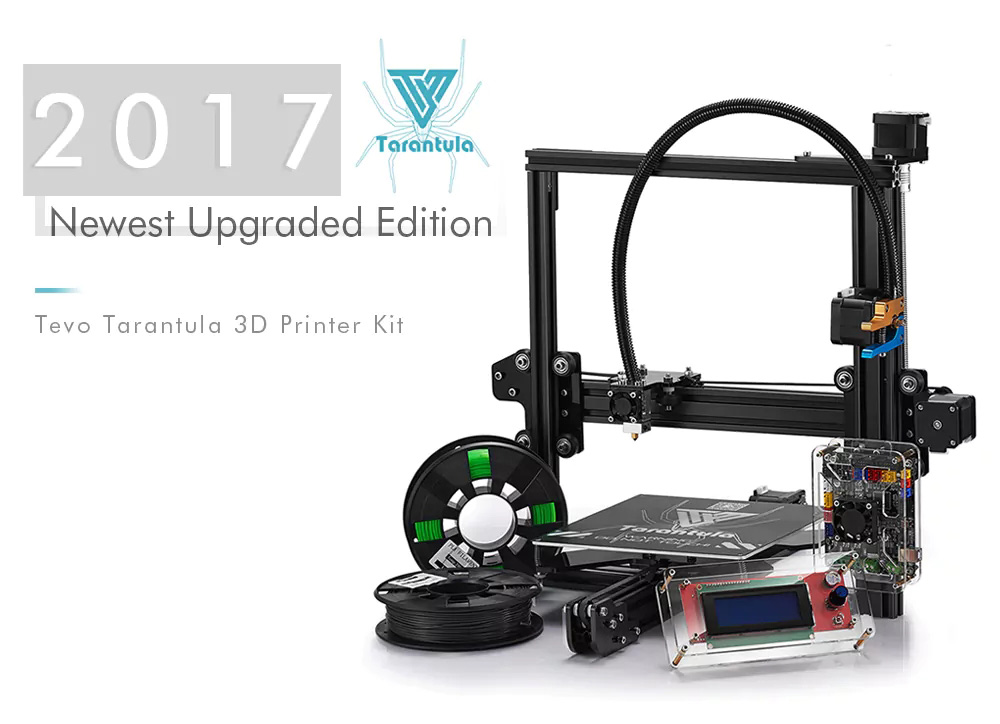
You can check this out if you want to use Simplify3D with your FlashFroge Dreamer.
Build Guides
If you find yourself lost when assembling it, you can check out the user guide. You can also check the forums for FlashForge Dreamer to connect with your fellow enthusiasts who use the same kit. It has great support that’s why I consider it among the best DIY 3D printer kits.
Check Price Here
Go to top
3. Anycubic 4MAX
Click Here to Check Price for Anycubic 4MAX
Anycubic 4MAX DIY 3D printer kit is a semi-closed and large build volume 3D printer. Thanks to its Modular Design, assembling it is very easy! In fact, you can set it up and start printing in 15 minutes or less. It’s one of the 3D printers that
This kit has a very large printing volume and comes with aluminum composite plates and injection molded parts making it painless to assemble the whole machine. It is also packed with full features equipping it with everything it needs to deliver stunning 3D printed objects.
In addition, it comes with various features that make the operation convenient and the process smooth. It also uses the ANYCUBIC Ultrabase with very strong adhesion and easy removal.
It also has the ability to resume after power loss, a heavy-duty support plate to reduce wobble, and aviation plugs that use high-quality winning connectors with straightforward wiring. Its main power is insulated for safety, the lead screw motor offers high Z-axis resolution and it also comes with a filament run-out sensor to save you from the hassle when the filament runs out.
Furthermore, this DIY 3D printer is designed to cater to different types of nationalities because it is open source and supports multi-language. Also, thanks to its large print volume, you can choose whether you 3D print a small or large object.
Overall, I am very happy and impressed with this. 4MAX is high-quality, competitive, fairly priced, has a huge build volume, and delivers high-resolution outputs. There is nothing not to like in it.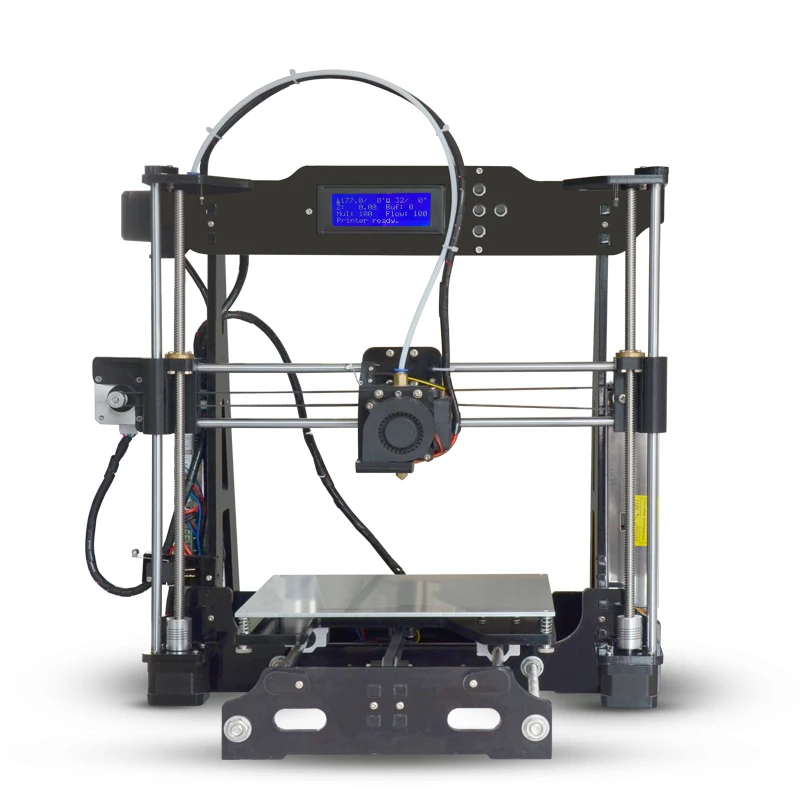
Software and electronics
You can use Cura as your slicer software. It accepts STL, OBJ and AMF as input formats and produces GCode as output.
Build Guides
It is easy to build because it has a modular design. It comes with aluminum composite plates and injection molded parts.
It is designed into several modules, so the whole machine is very easy to assemble. Yes, it’s easy and fast to assemble that you can start printing in 15 minutes or less.
Check Price Here
Go to top
4. Anycubic Kossel Delta DIY Kit
Click Here to Check Price for Anycubic Kossel Delta DIY
Anycubic Kossel Delta is a parametric robot 3D printer. It was built in 2012 by Johann in Seattle, USA, based on his Rostock prototype. The DIY 3D printer kits’ plans were designed by Johann C. Rocholl in 2012 and have been around with some minor changes since then.
The concept of Anycubic Kossel Delta 3D printer design is to eliminate backlash problems. Backlash occurs when one of the movement axes has slack (caused by loose belts for example).
Backlash occurs when one of the movement axes has slack (caused by loose belts for example).
You can get the SCAD and STL files for Kossel Delta 3D printer by running the following command on your terminal:
git clone https://github.com/jcrocholl/kossel.git
If you want Delta 3D printer kits, this is probably the best that you can get from the brand.
Bill of Materials
You can find this information on Kossel’s RepRap wiki page. It contains all the necessary items, printed and non-printed parts.
Software and electronics
The controller for this 3D printer must be RIS 1 or RIS 1a compliant. You can check a list of controllers on this page.
For the firmware, you check this list. Choose one that is compatible with the controller you select.
Just like Prusa i3 3D printer, Kossel Delta DIY kit, this printer can be upgraded to have a dual extruder.
Here’s a good guide for installing a Duet board for Anycubic Kossel Delta. The Duet board is a popular 32-bit ARm based controller board with an ethernet port. You can check this page to learn how to install an LCD display.
The Duet board is a popular 32-bit ARm based controller board with an ethernet port. You can check this page to learn how to install an LCD display.
Build Guides
A number of instructions are available to help you build Anycubic Kossel Delta 3D printer. You can check the following links for more details on how to build a 3D printer tutorials:
- Instructions from Think3dPrint3d
- Instructions for using 32-bit Duet electronics
- Video series
If you encounter any problems while setting up Anycubic Kossel Delta or any DIY 3D printer kits from the brand, you can check this forum. You can also use the IRC channel to connect with the RepRap community. It’s one of the fastest and easiest ways to get answers to your questions.
Check price
Go to top
5. Creality Ender 3 DIY 3D Printer
Check Price at Amazon
Creality Ender 3 is a fully open-source kit. You can help improve the printer upon the source code and share the changes within the community for a better experience.
Also, it can resume 3D printing even after a power outage or lapse occurs. Its upgraded extruder greatly reduces plugging risk and bad extrusion. For a more enjoyable experience, it has V-Slot with POM wheels for a quiet, smooth and durable 3D printing experience.
This is among the DIY 3D printer kits that are ideal for STEM projects and are great gifts for kids.
Assembly
This 3D printer kit is very easy to set up and assemble because the process is fairly straightforward. It only took me about an hour to fully set this up and make it work.
All the tools needed are provided with the unit so you can complete the full setup. The instructions are also easy to follow, but if you have a hard time, you can watch video tutorials on YouTube.
Since it is a kit, you will have to put it together. It might take about 3 hours to assemble but you will learn a lot about the machine during the assembly
It is fairly easy to use. The menus are easy to find and understand.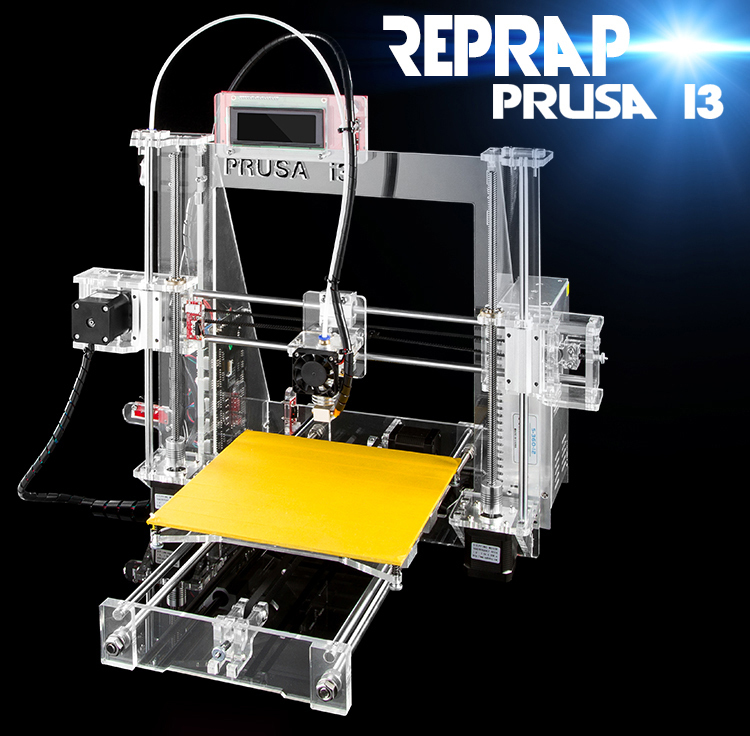 You can just put the stl file on the micro SD card and start 3D printing. However, placing the SD card can be a bit challenging, but you will get used to it over time.
You can just put the stl file on the micro SD card and start 3D printing. However, placing the SD card can be a bit challenging, but you will get used to it over time.
Overall, Creality Ender 3 is a great 3D printer kit. It is smooth to assemble and easy to use. Those who have tried this are very pleased and satisfied, so this is highly recommended.
Check Price at Amazon
Go to top
6. GEEETECH A10 3D Printer
Check Price at Amazon
GEEETECH A10 is a low-cost kit. It is easy to install and very simple to assemble. In fact, you can make it work in only 30 minutes or less. You can also make your children help for fun. If some components are loose, you can fix them using the tools included in the package.
It has a standard volume and 360-degree full view giving you a great preview of the printing details. In addition, it is equipped with powerful features for a convenient printing experience like a filament detector that would alert you in case the printer would run in the air or the spool is an empty and break-resuming capability that enables the printer to resume printing after an unexpected power outage to save you from the hassle or repetitive and time-consuming printing jobs.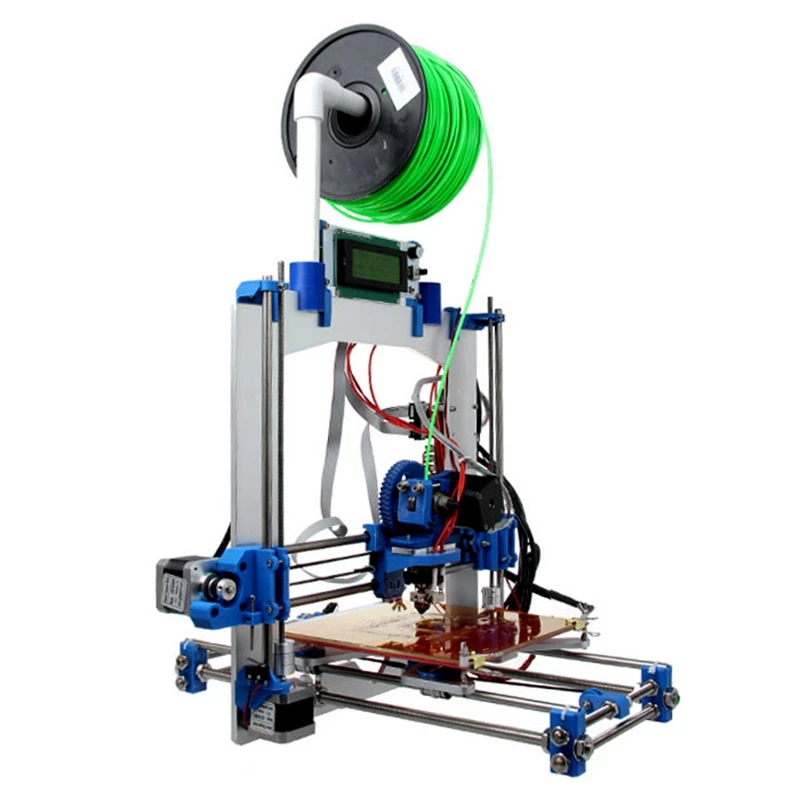
Bill of Materials
This 3D printer DIY kit has modulated structure allowing for an easy installment within 10 minutes. It is simple and convenient to use. Plus, it has an open-source control board for limitless possibilities that allows you to adjust your printers and modify the firmware.
It is made of an aluminum frame and has a high adhesion building platform that makes printing works easier. You do not need mask tape or glue stick to make it work. It also works quietly and has a rock-solid build.
GEEETECH A10 DIY Kit Software and electronics
Geeetech self-developed host software, Repetier Host. It is packed with many features empowering professionals and hobbyists to set parameters and one-click default mode to beginners.
For power input, it requires 115/230V AC, 50/60Hz. Meanwhile, power output requires DC24V-15A Max and 360W.
For the firmware, visit the following link.
http://www.geeetech.com/download.html?download_id=30
Build Guides
The 3D printer is very easy to assemble.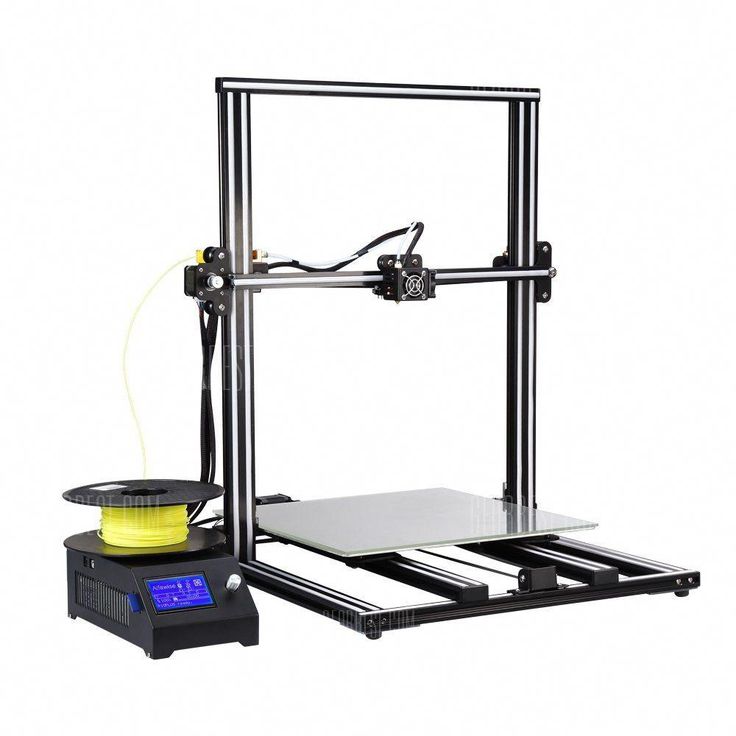 In fact, you can put it up in 10 minutes and make it work in less than half an hour. Just unpack, bolt the upper to the lower, connect all the labeled wire, level the bed and start printing!
In fact, you can put it up in 10 minutes and make it work in less than half an hour. Just unpack, bolt the upper to the lower, connect all the labeled wire, level the bed and start printing!
This low-cost DIY kit is highly recommended for those looking for open-source 3D printer kits with a large build volume.
Check Price at Amazon
Go to top
7. Geeetech 3D Printer Prusa I3 Pro W
Check Price at Amazon
This version is one of the popular 3D printer kits from Geeetech. Just like the first one, you can download the needed files from its website.
https://www.geeetech.com/download.html?download_id=36
Bill of Materials
Geeetech I3 Pro W 3D printer has its whole frame made of high-quality wood. It is designed to bring a great sense of accomplishment. Despite the change in material compared to the I3 Pro printers, it maintains the excellent features of the I3 series.
It also offers a large build volume, high printing accuracy, impressive printing speed and the option to print using SD card alone. It has an open filament system and a strong structure too. That’s not all, auto-leveling the heated bed is easy and it is low price.
It has an open filament system and a strong structure too. That’s not all, auto-leveling the heated bed is easy and it is low price.
Software and electronics
Geeetech I3 Pro W is paired with Easy Print 3D printing and control software to make the whole printing experience manageable for both newbies and pros alike. You can also upgrade it to enjoy the convenience brought by the cloud 3D printing solution.
Just configure the Pro W with a Wi-Fi hotspot and the cloud 3D printing solution will enable you to enjoy free 3D models, direct control over the whole printing process, and even share your experience via the app anywhere and anytime. It has a 3D touch that assists auto-leveling and guaranteeing amazing print quality.
Build Guides
Building the best DIY 3D printer kits isn’t easy but not this one because it has simplified and custom-fit parts. Also, there’s a lot of documentation available. There’s a file with an assembly instruction manual on its website that you can freely download.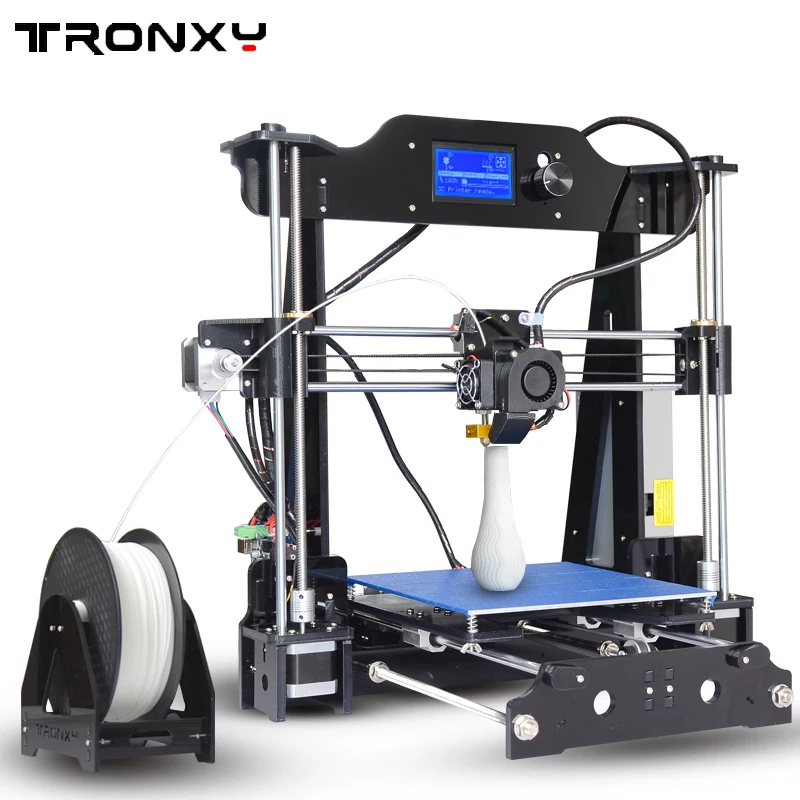
Check Price at Amazon
Go to top
8. RepRap Guru Prusa i3 3D Printer Kit
Check Price at eBay
This RepRap 3D printer is designed to give you the best experience. A team of experts spent countless hours to build this kit. They also made sure that the process wouldn’t be that difficult for you.
Assembly
RepRap Guru is pre-assembled and doesn’t require altering, drilling, soldering or cutting. So, you can make it work without any tools.
The package includes all the material needed for assembly. Most of the components fit together very nicely.
However, there are nuts and bolts that were not too great. There are nuts that just spin in the nut holders due to nut pockets that cannot be used.
Their manual and video tutorials are helpful, but I think that it needs to be updated. The context still applies, but beginners might find it confusing.
For me, assembling RepRap DIY kits is not so easy, but it’s not that difficult either. After all, this is one of the best DIY 3D printers and it needs a certain level of skill to successfully assemble the printer.
After all, this is one of the best DIY 3D printers and it needs a certain level of skill to successfully assemble the printer.
Electronics and Configurations
Aside from the assembly, you’ve got to have enough knowledge with the wiring. If you know the basics, you will definitely learn your way in getting around a RepRap 3D printer.
The only downside is that – the wires are not cut to the proper lengths. So, you might end up with your controller looking like a bird’s nest. Nevertheless, I had a great 3D printing experience with it.
Check Price at eBay
Go to top
9. Tronxy X5SA Desktop DIY 3D Printer Kit
Check Price at Amazon
Tronxy x5sa DIY 3D printer kits come in a convenient size and minimalist design that features an aluminum metal frame like X1. At first gland, you will find its construction a bit weird compared to other 3D printers, but don’t let that fool you because this works just as well as its counterparts.
In fact, this may please 3D printer novices because it is well-organized and fun to assemble. Here’s what you need to know about Tronxy X5SA Desktop DIY 3D Printer Kit.
Assembly
The Tronxy X5SA DIY package includes everything you need to keep the 3D printer up and running. Aside from providing the materials, it includes a user manual that is easy to follow. It is descriptive and very comprehensible. Most users find its assembly process simple.
Personally, it took me around 4 hours and 30 minutes to assemble this DIY 3D printer kit and have my first 3D print. Tronxy X5SA is already fast compared to other brands. You just need a basic understanding of the whole printer to get a grasp on how you should work around it.
Check Price at Amazon
Go to top
10. iMakr Startt 3D Printer Kit
Click Here to Check Price for iMakr Startt
Startt is another amazing DIY 3D printer kit with a metal frame that will surely make a great starter 3D printer kit for beginners. Startt is a Prusa i3 clone that is pitched as an educational product to appeal to parents and teachers It is low-cost, solid, and effective. In fact, this is one of the best cheap DIY 3D printer kits on the market.
Startt is a Prusa i3 clone that is pitched as an educational product to appeal to parents and teachers It is low-cost, solid, and effective. In fact, this is one of the best cheap DIY 3D printer kits on the market.
Although iMakr Startt is cheap, it delivers impressive results. The brand is also very considerate as they include the package with a comprehensible manual. That’s not all, the technical part is already put together. So, you are left with a simpler job. Here’s what you need to know about this 3D printer kit.
Assembly
The good thing about this 3D printer is that it is easy to assemble. The kit includes everything you need to keep this machine up and running including screws, nuts, motor, acrylic pieces and rod caps. You need not wonder if all the items you need are in the package or not because the manufacturer includes a checklist of the parts, alongside the quality.
In addition, you can find a step-by-step instruction manual for the assembly from the imakr. comwebsite. There’s also a video tutorial that you can follow to set up the machine. According to iMakr, the assembly time nearly takes a full 5 hours. The downside is that it has a small build volume.
comwebsite. There’s also a video tutorial that you can follow to set up the machine. According to iMakr, the assembly time nearly takes a full 5 hours. The downside is that it has a small build volume.
Beginners will surely love iMakr Startt as this is one of the 3D printer kits that do not need soldering to assemble. It also doesn’t require specific skills. If you just follow the steps appropriately, you will see the results that you want to see.
Check Price
Go to top
11. Tevo Tarantula 3D Printer Kit
Check Price at Amazon
This is another low price DIY 3D printer kit with all-metal frame construction. It uses an extruded black anodized aluminum for its frame that comes with laser-cut acrylic plates for the control box and ball-bearing V-Groove wheels for a smooth and quiet operation.
Tevo Tarantula’s design is very simple. But assembly isn’t as easy as the first three 3D printers. In fact, others claim that it took them 15 hours to finish. You have to take as much time as you need when building this 3D printing machine to produce the best results. Otherwise, you will not get good prints.
In fact, others claim that it took them 15 hours to finish. You have to take as much time as you need when building this 3D printing machine to produce the best results. Otherwise, you will not get good prints.
In this section, I’ll give you an overview of the assembly process.
Assembly
This kit is completely disassembled. So, don’t expect a printer that works straight out of the box. It took me almost 7 hours to assemble this, but I’ve heard from others that it took them 12 to 15 hours. Yes, it’s not easy!
I suggest that you take your time when assembling this machine. Later on, you will thank yourself because the setup of your printer will affect its accuracy and quality. The good thing about Tevo Tarantula is that there are video tutorials you can follow. But its accompanying manual isn’t that helpful.
There’s also an active community that is very supportive of this brand. If you have questions about the printer, just ask and you will likely receive a reply from someone who already went through the same issue.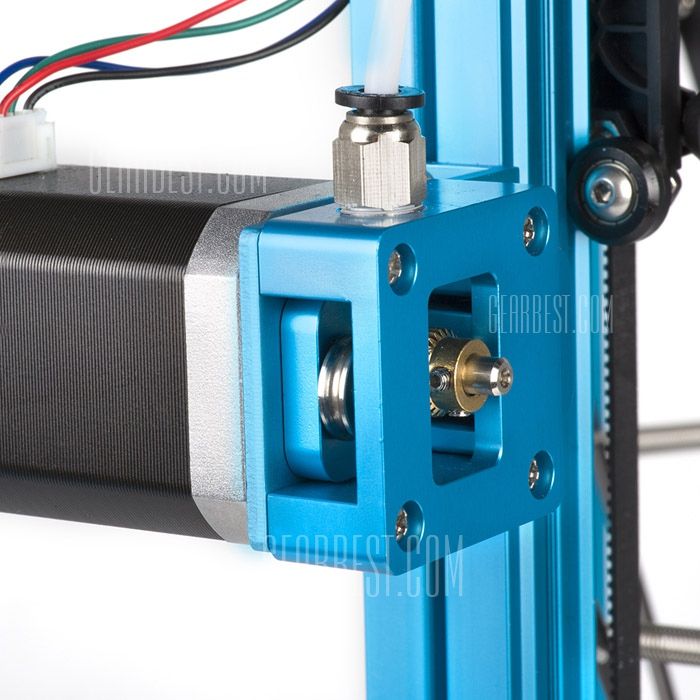
In general, Tevo Tarantula is not easy to assemble. The process is very complicated as the parts are literally into pieces, but it’s worth it. This is probably the best 3D printer kit under 300.
Check Price at Amazon
Go to top
How much does a DIY 3D printer cost?
DIY printers are cheaper than the regular 3D printers you can usually find in the market because you have to put them together. Yes, it requires some effort. But some are pre-assembled and easier to work with.
This tool is best for those who are interested in familiarizing the machine and how it works. If you are an enthusiast, this will be perfect for you.
You can buy one for $100. Some kits may cost more up to $300, but they usually offer more features and maybe more complicated to assemble but funnier to use.
Go to top
Can you DIY a 3D printer?
Yes! There are DIY 3D printer kits in the market for this. Depending on the model, some come in packages with everything you need. Meanwhile, you might need to look for other parts outside the store. You can also upgrade some parts to achieve the printer you want.
Meanwhile, you might need to look for other parts outside the store. You can also upgrade some parts to achieve the printer you want.
Is owning a 3D printer illegal?
No. 3D printing is completely legal, so owning a 3D printer is okay. However, there might be items that you should not 3D print. For example, any objects that are patented are not safe to print. So as firearms and explosives.
Go to top
Is it expensive to 3D print?
3D printing can cost from $3 up to thousands of dollars. However, it is difficult to give an exact cost because the price depends on several factors, including material, model complexity, labor, and more. Printing on your own, especially if you do it often, is cheaper over time than getting a 3D printing service.
Go to top
Conclusion
Building 3D printers is quite challenging but it’s doable as there are a lot of great kits in the market today and you’ll find overwhelming support online. The machines above are among the best DIY 3D printer kits. Most of them are cheap but it requires basic skills to get the machine up and running because it’s not fully assembled when you receive the package.
Most of them are cheap but it requires basic skills to get the machine up and running because it’s not fully assembled when you receive the package.
The good thing about buying DIY 3D printers is that you get the machine you desire. In addition, you will learn how to make your own 3D printer. Also, there’s a supportive community that includes professionals 3D printer builders who are willing to help you get the job done.
📌To get your ideal 3D printing machine you have to determine how it looks and what features should be included. In addition, you have to be patient because most likely you will not get everything right the first time. In fact, sometimes you have to do it again for the third or fourth time or more.
If you need to learn more about DIY 3D printing kits, 3D printers or 3D pens, you may check our homepage.
References
- 3dinsider.com/how-to-build-3d-printer-kit
- all3dp.com/1/3d-printer-plans-diy-reprap-prusa
- allthat3d.
 com/3d-printing-pen
com/3d-printing-pen
…
is our everything. Overview of kits for self-assembly.
Want a printer, but don't want to draw it from scratch, and then look for laser cutting, milling? Don't like ready-made printers? Or do they seem too expensive? And at the same time you want to collect yourself?
I offer a short review of DIY printer projects, the kits for assembling which you can buy, assemble yourself and come out much cheaper than buying ready-made ones.
I talked about this very briefly at the last 3Dtoday Fest and heard a lot of questions about self-assembly of kits. Now I'll tell you more and0009 with names/appearances/passwords with links.
If you take Ultimaker and Makerbot, they also once started with plywood. Ultimaker had Original, and Makerbot made Thing-o-matic and Replicator original. It was a good start for development, Ultimaker is still making the sources of their printers publicly available.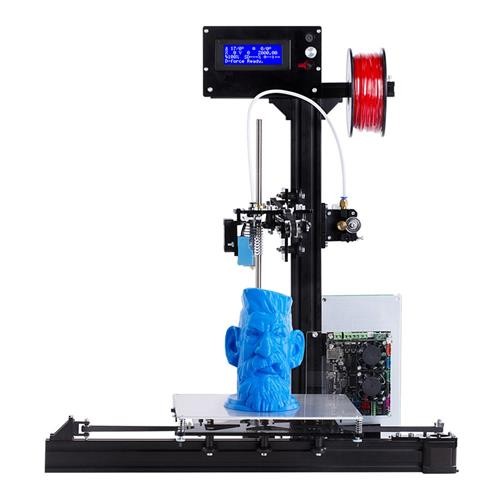
ZAV
We can say that this is the most common printer, a large community, drawings are not distributed after one unpleasant incident. In addition to the VK group, with which it all started, there is a good site where you can order an assembly kit, components, download assembly instructions and a list of parts that need to be purchased. In addition to the VK group, there is a chat in the banned Telegram.
In my opinion, the project is developing rapidly, because. in terms of body material, in addition to ordinary plywood, we have already tried laminated plywood and MDF, there is an option made of aluminum composite. Laminated plywood, unfortunately, went in unsuccessfully, after some time cracks and warpage began to appear. Initially, they were made from ordinary plywood, it had to be painted and impregnated, then they tried MDF, which already had to be painted, laminated plywood. Now a new round of development, based on Ultimaker - an aluminum composite case with acrylic sidewalls.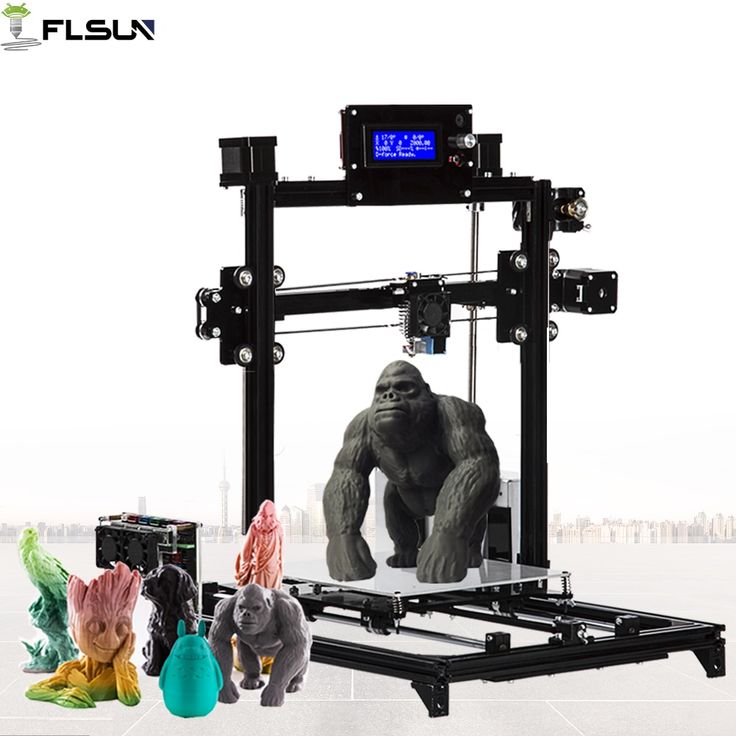 To understand the versions that are listed on the site, v1 is regular plywood, v2 is MDF and v3 is composite. Also, there is a choice of cases for certain boards, MKS Gen l, Lerge and others.
To understand the versions that are listed on the site, v1 is regular plywood, v2 is MDF and v3 is composite. Also, there is a choice of cases for certain boards, MKS Gen l, Lerge and others.
Looks great, does not warp from moisture. Also, the kit includes a radiator and a plate for mounting it. The radiator is flat, the size of the cooler is 4010, the threaded hole for the thermal barrier is standard E3D - M7.
Currently there are printers with 3 different table sizes:
1) Zav mini. Print area 100*100 mm.
2) Zav max, zav L. Print area 200*200 mm.
3) Zav max. Printing area 200*300 mm.
Z-bolt
We can say that the first printer with open drawings, in which the author made a toolchanger, like in E3D.
There is a website, a VK group and a youtube channel and, of course, a chat in Telegram.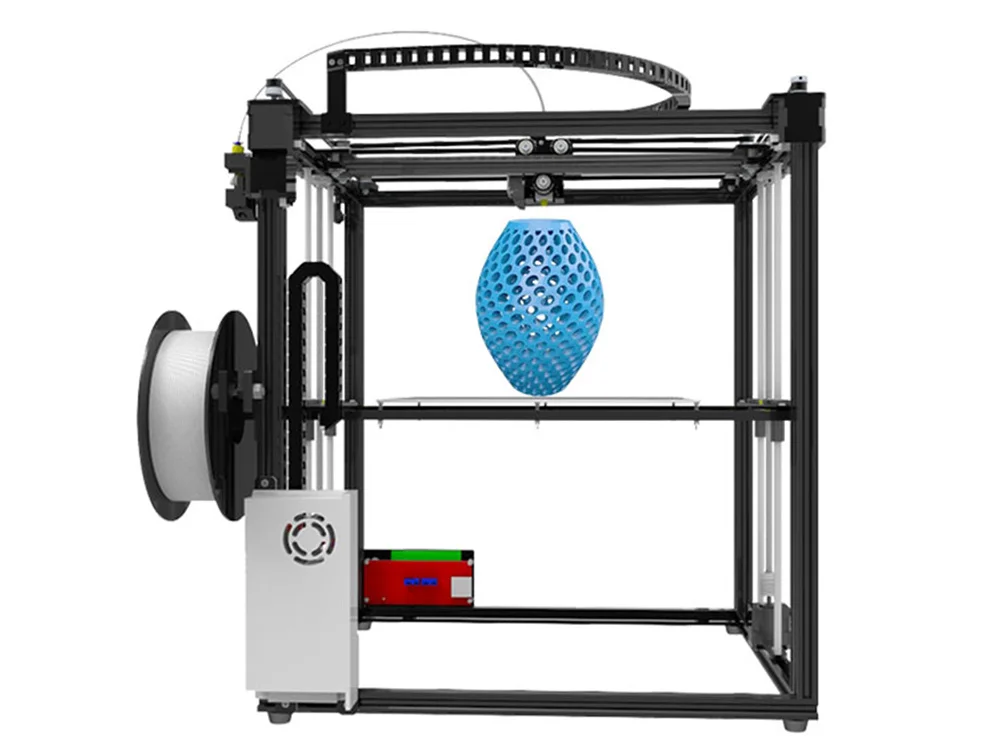 BOM can be viewed here.
BOM can be viewed here.
UNI
If you think that a printer is a machine and it must be iron, then you are here. The project has a website, a VK group and a Telegram chat.
UlTi
Ultimaker interpretation for fully printed parts and 8mm rolls.
A detailed description is on the website. The source data in SolidWorks can be downloaded here. There is a website, a VK group, and even a Telegram channel.
New version of the printer housing made exclusively from sheet steel. The launch of assembly kits is scheduled to begin in a month or two. Source codes, as well as the previous version, will be available. The steel body is fully compatible with plywood.
Ultimaker Plastmaska edition
And finally, Vanya's variation of Ultimaker. Fewer printed parts than UlTi, more adaptable to low cost parts from Ultimaker clones.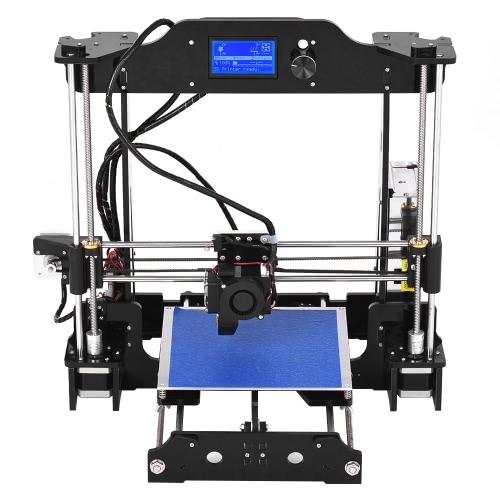 The site is available, as is the description of the assembly process on the site.
The site is available, as is the description of the assembly process on the site.
NIOZ
Initially, the guys cut the steel Prusa i3 kits. And they, judging by their website, are still selling them.
There is a VK group for communication. There are also kits for assembling a steel H-bot and Felix-like printers, in case you want to assemble an analogue of a printer from MZTO. In addition to printers, they sell very good spare parts for printers.
Everyone decides which printer to make. In most cases, the authors can share the drawings, and if possible, you can even make a steel Ultimaker.
Subscribe author
Subscribe
Don't want
78
3D printer build kit vs DIY, which is cheaper? / 3D printers, machines and accessories / iXBT Live
3D printing and 3D printers have long been in use, from year to year the price of the printers themselves, components and consumables is falling lower and lower. Reading numerous forums where owners of eminent branded printers costing from 50,000 to 250,000 rubles complain about the same problems as with cheap self-assembly ones, I thought. If there is no difference, why pay more? I have already tested 2 ready-made sets of 3D printers from China in practice and I was very pleased with the quality. One interesting point remains, what comes out cheaper? Assemble yourself from components or buy one of the sets?
Reading numerous forums where owners of eminent branded printers costing from 50,000 to 250,000 rubles complain about the same problems as with cheap self-assembly ones, I thought. If there is no difference, why pay more? I have already tested 2 ready-made sets of 3D printers from China in practice and I was very pleased with the quality. One interesting point remains, what comes out cheaper? Assemble yourself from components or buy one of the sets?
The photo shows my printer from the previous review - JG Aurora, dressed in a steel frame. In principle, I just replaced the frame and that's it, but the printer began to look much better. He didn’t get much better at typing, before that everything was in order, but it prompted me to certain thoughts. Why is it necessary to take sets with a brand, as if Chinese or European, and overpay them, albeit a little in the case of China, but still. And if you take components without a frame, and buy the frame already here in Russia? Wouldn't it come out cheaper?
I started looking for the cheapest 3D printer kit on a well-known site and found a suitable one for 8,700 rubles. about. The price already includes delivery.
about. The price already includes delivery.
Let's take a closer look at this set.
The basis of any 3D printer is the brain. The brains here are standard - Arduina Mega 2560 and the shield for it - Ramps 1.4.
In principle, this is a standard and most printers are assembled on this scheme. More expensive boards, such as MKS Gen or Base, are also based on the same Arduin.
The main thing here is to look at the Ramps for the presence of unsoldered places or, on the contrary, extra influxes, because of this, most often people have problems.
Next. I see in this set there is a four-line LCD2004 screen with a card reader. This is a very convenient addition, I have not used a 3D printer + computer for a year now. I throw a G-code for printing on a memory card and the printer prints offline.
The red scarf is an adapter for Ramps with leads for this screen, it is included in the kit, as well as wires for the screen.
Drivers, wires, limit switches.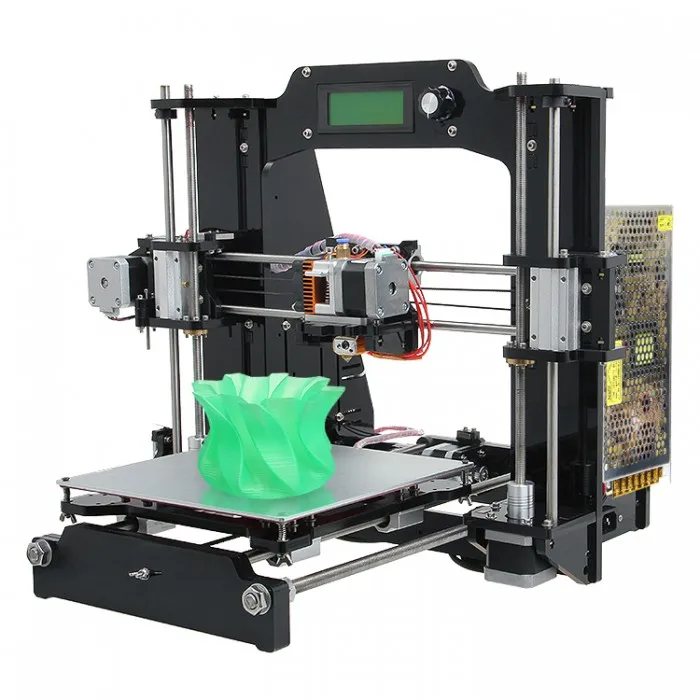 It's all there. Drivers are ordinary - DRV8825, limit switches on boards, wires without braid. Cheap and cheerful, but effective. Radiators were also put to the drivers. The motors here are also standard for most 3D printers, these are NEMA17 stepper motors.
It's all there. Drivers are ordinary - DRV8825, limit switches on boards, wires without braid. Cheap and cheerful, but effective. Radiators were also put to the drivers. The motors here are also standard for most 3D printers, these are NEMA17 stepper motors.
Also in the set there is a heating element for the table - MK2A board on a textolite base. For me, this is a more successful heater than the MK3 version, which is integrated on an aluminum plate. The fact is that I print on glass and I don’t need an additional layer between the glass and the heater. MK2 will heat up faster.
The crown of this set is the E3D version 5 clone print head. The print head comes pre-assembled with a heating element and thermistor. The only thing missing is a pushing mechanism for plastic - an extruder. And since there are 5 motors here, it means that only a small part of the extruder is needed. Under this element, a Bowden-type extruder is required, which means the plastic will be fed through a PTFE tube to a heated nozzle.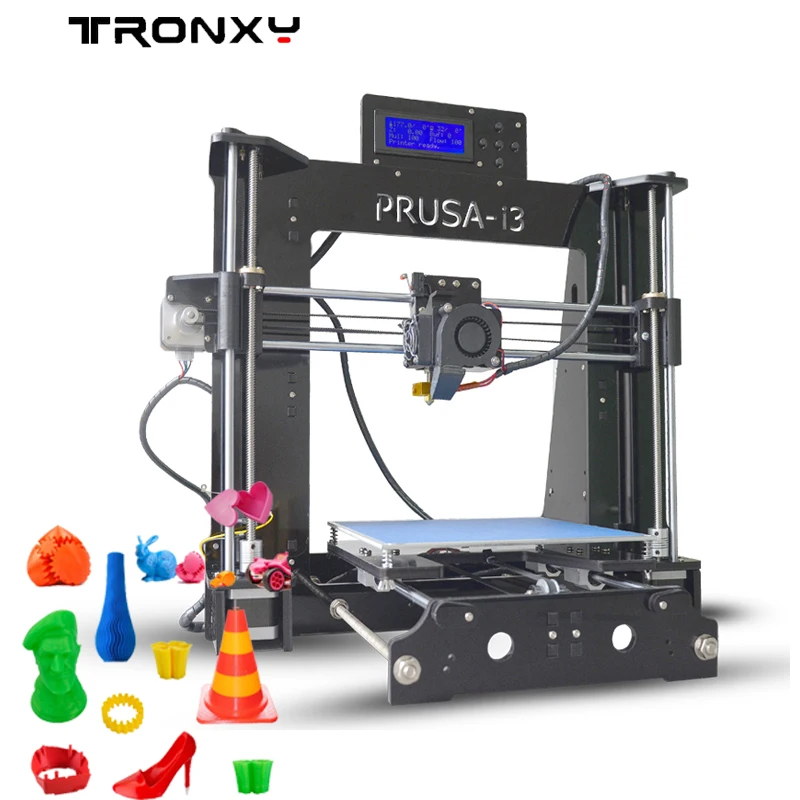 I don’t see a PTFE tube in the picture, although the seller writes that it is included, perhaps he means a small Teflon tube inside the thermal barrier.
I don’t see a PTFE tube in the picture, although the seller writes that it is included, perhaps he means a small Teflon tube inside the thermal barrier.
Now what is missing in the set.
Well, the main missing piece is the frame. I bought 2 types of steel frames from Nioz and Soberistanok. The Nioz is easier to assemble and doesn't require any printed parts, but there are no bolts included. The assembler puts bolts in the kit, but the frame itself uses a few printed elements, without a printer, which are not so easy to get. Both frames are cut in Chelyabinsk and at a price of about 3000-3500 rubles. without painting and weight 3-5 kg. delivered by a transport company. For delivery from Chelyabinsk to Moscow, I paid a little less than 600 rubles for the frame.
The cost of the frame 3800 + delivery is 4400 rubles.
In addition to the frame, shafts, bearings, trapezoidal or conventional screws and belt spools must be added.
Shafts, like the frame, are better to take from us in Russia, they come out cheaper than on Aliexpress. For example, a set of shafts for a given frame from the same Nioz will be 1380r.
For example, a set of shafts for a given frame from the same Nioz will be 1380r.
Trapezoidal screws with a nut on Ali are almost 2 times cheaper and come out at about 800r per pair.
Only a Bowden extruder and a pair of belted spools need to be added.
The extruder is also better to take on Ali: Bowden Extruder — 600r.
There is already a motor mount to the frame and a good hardened steel gear with fine teeth is used.
GT-2 belt can be taken from the same seller: GT-2 belt - 200 rubles, especially since it already has 2 spools.
Bearings - 400 rubles for 12 pieces, which is quite enough.
And you also need to add a power supply, this is about 1400r.
Total comes out to about 17900r.
All that remains is to upload the Marlin firmware to the board via the Arduino IDE and adjust the parameters for your printer. It is convenient to substitute the necessary parameters into the firmware using a calculator, for example: http://prusaprinters.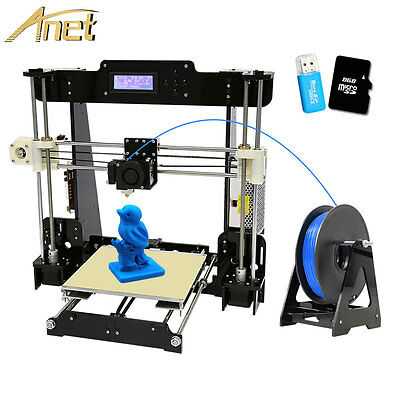 org/calculator/
org/calculator/
Now consider the assembly kit, for example the cheapest one - Annet A6.
According to the link, the manufacturer is listed as Infitary, but this is definitely a clone of the rather popular Annet A6, possibly with some modifications.
Let's compare it with the set above. There are already trapezoidal screws and even with aluminum dampers. A more expensive Direct-type extruder is installed and already with blowing, which has a positive effect when printing with PLA or HIPS plastics.
The heating table is more expensive - MK3, although MK2 is more attractive for me. The control board is not a sandwich from Mega + Ramps, but something more impressive, there is no name of the board in the description, but everything looks in order, it resembles something from the MKS line.
There is also a screen 2004 with a card reader and additionally there is a stand for a reel with plastic.
The price for such a set of 3D printer is about 14200 rubles.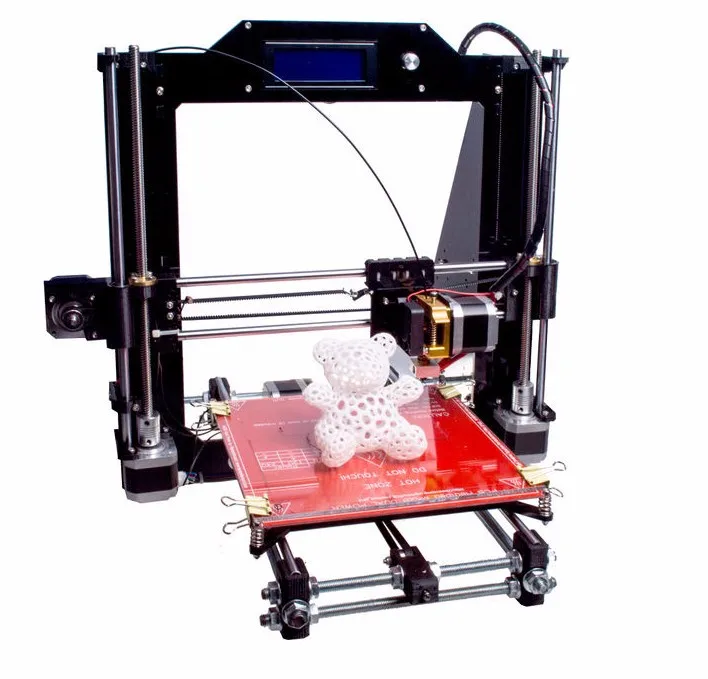
That is, it turns out a difference of about 4000 rubles. Which just matches the steel frame. And printers with a steel frame are already being sold for 25,000 rubles, for example, in the same Chelyabinsk.
In principle, I suspected that taking a 3D printer kit from the Chinese is about the same as assembling it yourself in parts, only in the kit everything is already set up and fits together, and in a self-assembly printer you will also have to figure out what to connect and tinker with firmware.
Another option to get an inexpensive 3D printer remains - buying on Avito, etc. through ads, but here you need to monitor message boards more often in search of good offers, and even then, you can end up with a problematic copy.
News
Publications
In this review, I will tell you about my experience with the Orico aluminum laptop stand, which I have been using for the 4th week now. It is suitable for laptops with a display diagonal of 15 to 17.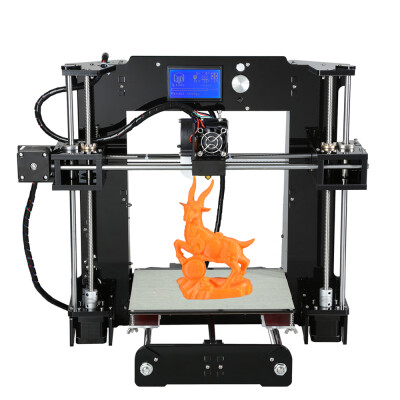 4", however...
4", however...
This is the first charger from Vention that I decided to buy and review it. I have no comments about the brand's cables: 100W have less resistance, than from Ugreen. Therefore...
The Chinese eat a lot and almost everything that runs, flies, crawls and swims. Of course, they also eat vegetables, like greens. But, the Chinese are crazy about snake meat and eat with great pleasure alive...
Which is better: a projector or a TV? How to provide a wide diagonal picture for home theater? The new TouYinger Q10 high brightness LED projector puts an end to this...
The main advantages of the Jenovox B7U Pro projector are its high brightness of 3700 ANSI lumens, native 4K resolution and excellent display of HDR10 and 3D video. Manufacturer's warranty 2 years. Full potential...
Do you think a password on your smartphone guarantees the safety of your data and money? And here it is not. And, if you didn't protect your SIM card with a PIN code, then if you lose your phone, you can lose everything.


